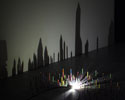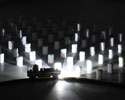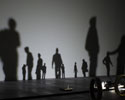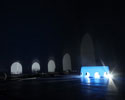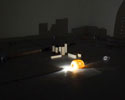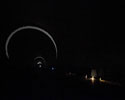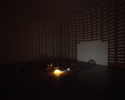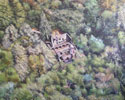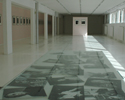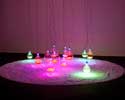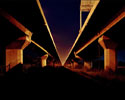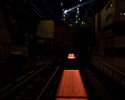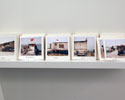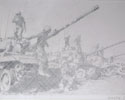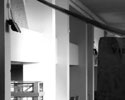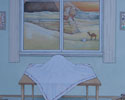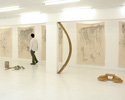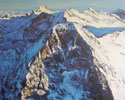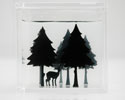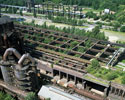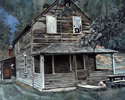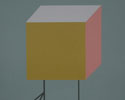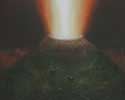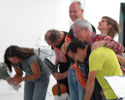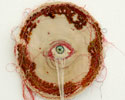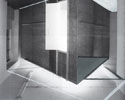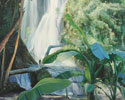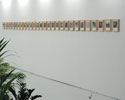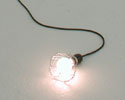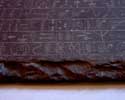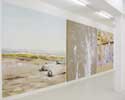|
GALERIE LUCY MACKINTOSH ARTISTS SHOWS INFORMATION EVENTS |
||||||||||||||
|
| ||||||||||||||
| ||||||||||||||
| The Tenth Sentiment 10番目の感傷(点・線・面) | ||||||||||||||
| Ryota Kuwakubo | ||||||||||||||
| Vernissage le jeudi 27 octobre 2011 Ouverture du 28 octobre au 26 novembre 2011 | ||||||||||||||
 | ||||||||||||||
| Text in English | ||||||||||||||
| In the dark room, there is a small point light source equipped on a model train. The train runs
slowly along a railway track laid on the floor. Various objects, most of them everday items, are
arranged around the track, with the light projecting their shadows. Since the light source
comes very close to them, shadows are projected in extreme close-up on the walls, floor
and ceiling. It moves slowly, such that the shadows look larger and heavier than the original
materials are. All the objects are precisely placed and the shadows they project are of things very different to them, such as a forest, a power pylon, ruins, a tunnel, a gate, jetties, fields, playground equipment and so on. Though these are very common sights for many people, they are also tied into our personal experiences and memories. Instead of directly representing some specific things, all the objects are arranged in subtle ways so that we can establish our own personal connection to them. The elements comprising this work can be said to be “objects” physically placed alongside the model railway route, but they are also the point light sources and lines for the motion trajectory for each particular point, the cross-sectional surfaces of the “objects”. Moreover, the surface points that move along the lines also move the shadows. In this project, with its atmosphere similar to a magic lantern, the light source projects the “objects” surrounding it as if it were a camera lens. These images seem somehow nostalgic, as if they are triggering memories in the minds of each of us. Additionally, the Tenth Sentiment installation has two different perspectives. When we view only projected moving shadows, it feels like an immersive screening system, a kind of virtual reality or a cave, and we may feel as if we ourselves are on the train. Whilst in parallel, we can observe what is technically happening, the whole mechanism of the installation can be grasped: just daily commodities arranged in certain ways with one moving point light. This means that the installation opens itself to both a first-person, subjective point of view, and a third-person, objective point of view. And we are moving between these two modes at every single moment. The installation thus provides us with a layered and self-reflective appreciation. Since the whole process is based on a simple and obvious mechanism, we find ourselves in wonder at the installation. copyright photo: Kioku Keizo | ||||||||||||||
| Show overview | ||||||||||||||
| ||||||||||||||
|
| ||||||||||||||
| Archives | ||||||||||||||
|
| ||||||||||||||
